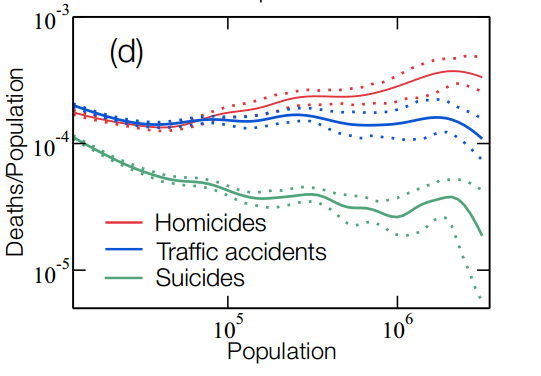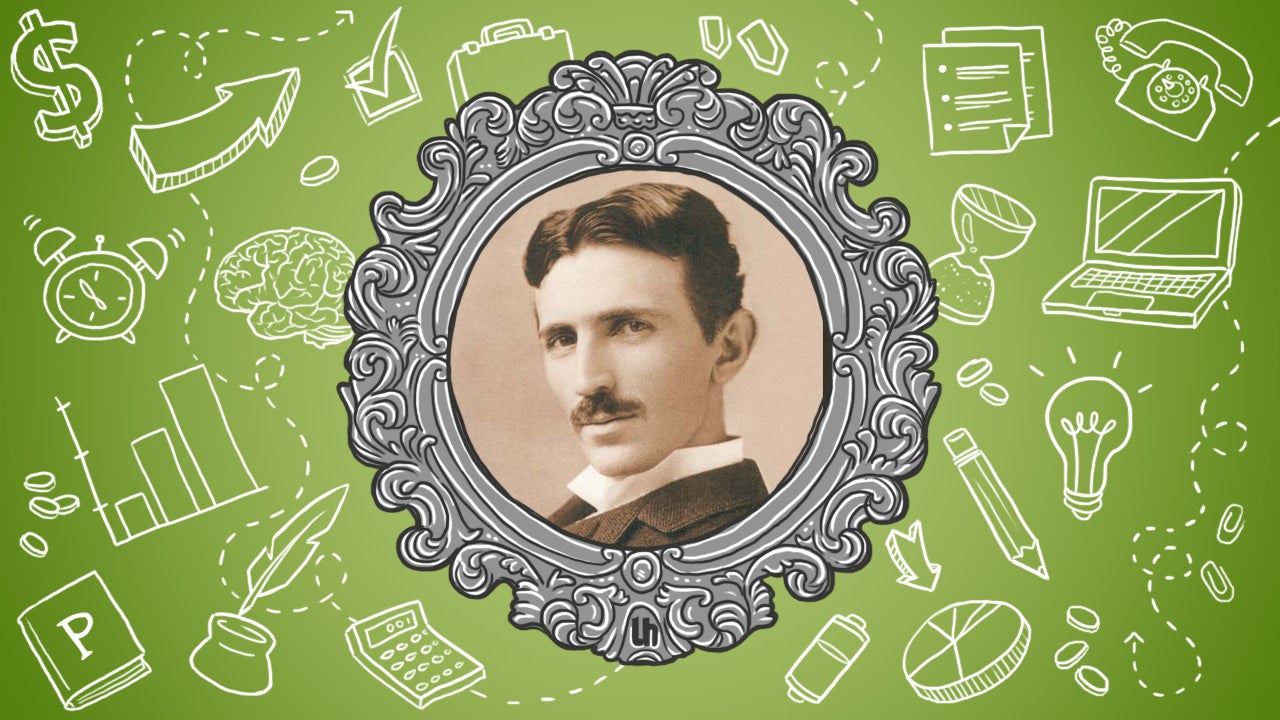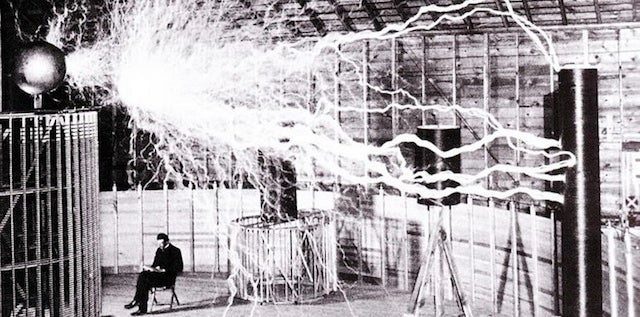
Paranapanema, SP - Brasil - / Being useful and productive is the aim of every knowledge acquired / - Quod scripsi, scripsi. - Welcome !
quarta-feira, 5 de março de 2014
5 Easy Ways to Improve Your Diet Right Now
Updated March 04, 2014
I know changing old, bad dietary habits is tough, and it takes a long time for new eating habits to become permanent. But don't make it too complicated - here are five easy things you can do right now to improve your nutrition.
1. Add an Extra Vegetable to Your Next Meal
I don't care if your next meal is breakfast, lunch or dinner, you can improve your diet instantly by eating an extra vegetable. Pick one that's green or brightly colored for maximal nutritional benefit. Steam some broccoli to go with your sandwich at lunch, and make two vegetable sides for dinner instead of one. Or eat a bigger salad. This even works fro breakfast -- add spinach to your scrambled eggs or make a green smoothie.
2. Eat a Piece of Fresh Fruit
Next time you're in line at the lunch counter, grab and apple or pear instead of a cookie or piece of cake. Or, if you're eating dinner at home, enjoy a bowl of berries for dessert. You don't have to give up your dessert if you're used to a nightly bowl of ice cream. Just cut back - serve up about half the amount you normally eat and fill the rest of the bowl with fresh fruits such as strawberries, blueberries, or sliced peaches. You'll cut back on the calories, plus get better nutritional value. And it still tastes awesome.
3. Drink More Water
A lot of excess calories from sugar and fat come from the beverages you consume. Drinking more water might help you lose weight if you drink it in place of sugary soft drinks. And if you drink alcohol, add in a glass of water between drinks. If you hate the taste of water, you can disguise it with a slice of lemon, lime, cucumber or fresh pineapple.
4. Make Your Next Grain a Whole Grain
Whole grains are higher in fiber than regular refined white grains, and since most people could use more fiber, it might be time to switch. The next time you eat bread choose 100-percent whole grain or 100-percent whole wheat bread. Swap out your sweet cereal for a bowl of oatmeal or a 100-percent whole grain cereal at breakfast. Choose brown rice or whole wheat pasta for dinner.
5. Pay Attention to Portions
There's an old saying about your eyes being bigger than your stomach. Although technically that's certainly not true, it's easy to load up a bigger portion of food than you need, especially when you're hungry. So, at your next meal, stop a minute to think about how much you're eating.
Your protein source (meat, poultry, fish, etc.) should take up about one-quarter of your plate, and any starchy foods like potatoes, rice or pasta, should only take up another quarter. The other half of your plate can be filled with nutritious low-calorie fruits and vegetables like tomatoes, broccoli, cauliflower, asparagus, peas, green beans, or a garden salad. That will probably be enough to fill you up, but it if you're still hungry, go for extra vegetables.
2014 aston martin vanquish

2014 aston martin vanquish
after a five year model hiatus, british automotive manufacturers aston martin have brought back to life the vanquish.
equipped with a naturally aspirated 6.0-liter V12 engine producing 565 horsepower and generating 457 LB-FT torque,the new 2014 aston reaches 0 to 62mph (100 km/h) in 3.9 seconds, maxing out at 183 mph ( 295 km/h). the interior
cockpit is outfitted with a full-grain leather package, alcantara and polished aluminum, featuring a premium 1000-watt
bang & olufsen 15-speaker audio system.

front view
image courtesy of autoblog

rear view
image courtesy of autoblog

driver side view
image courtesy of autoblog

3/4 front passenger view
image courtesy of autoblog

3/4 rear driver view
image courtesy of autoblog

taillight detail with matte orange finish
image courtesy of autoblog

naturally aspirated 6.0 liter v12 engine
image courtesy of autoblog

full leather interior
image courtesy of autoblog
Stress in the United States of America and how you can cope with it

Every year since 2007, the American Psychological Association (APA) has released an annual Stress in America™ survey which explores sources of stress, attitudes around stress, how people cope with it, and its impact, among other issues involved with stress. This post covers some of the findings from the 2013 study as they relate to teenagers, sleep, exercise and eating. Some tips about how to cope with stress are also offered.
Stress and teenagers
It is really no secret that many Americans are more stressed than ever, but the concerning news that the APA's study found is that stress is on the rise in teenagers. On a scale of 1-10, teens reported that their average stress level was 5.8, which is well over the number considered to be a healthy amount of stress (3.9), and was even greater than the average stress level of adults (5.1). 31% of these teens say that their level of stress is greater than it was in the last year. Of similar concern is the fact that many teens report that they don't know how to cope with this stress, with only about one of every two teenagers stating they feel confident in handling their personal problems, and 42% stating that they don't believe they do enough to manage their stress.
Stress and sleep
APA's study demonstrated that unhealthy stress levels interfere with the sleep of both adults and teenagers. Good sleep has many benefits to health and overall well being, so it is a big problem when we are not sleeping well. 43% of adults and 35% of teens indicated stress has caused them to lie awake at night. There are several reasons related to stress why people do not sleep well. Fortunately, many resources exist on how to get a good night's sleep, which include setting up sleep routines, making sure to wake up and go to bed at the same time every night, and deep breathing.
Stress and exercise
Exercise has many stress-busting effects, and APA's survey found that many Americans realize this, but even so, do not exercise daily. 37% of adults and 20% of teens reported they exercised less than once a week if at all. 39% of adults stated that they skipped exercising because of stress. If you feel short on time or struggle with getting enough exercise, you can still incorporate easy ways of getting exercise into your daily routine. Take the stairs instead of the elevator, park a little further away from your destination, or just take two minutes out of your day to do some push ups.
Stress and eating
The Stress in America™ survey indicates that stress contributes to how Americans eat. 38% of adults indicated that they overate or ate unhealthily because of stress, and 27% reported that they eat to manage stress. 26% of teens also reported they eat unhealthily to cope with stress, with 33% of those saying that they eat to distract themselves from whatever is causing them stress. With many negative health consequences of obesity, these statistics are concerning. It would do Americans well to get a better grip on stress.
How to conquer stress
The APA notes that popular ways of coping with stress are not always effective. 40% of adults indicate that they watch television or movies for more than two hours a day to cope with stress, but only 32% of them state that doing so is helpful. 42% note that they go online to cope with stress, with only 29% of them saying it is actually helpful. One of the most beneficial coping strategies was found to be psychotherapy, with 68% of respondents citing that this was helpful. Only 5%, however, indicated that they actually did this. If you are a parent of a stressed out teen, your son or daughter could benefit tremendously from talking to a mental health professional.
APA suggests that you not only talk to your primary care physician about stress, but make sure to also seek psychological help and have your psychologist and physician work together to help you conquer stress.
Source
Hanami: a guide to cherry blossom viewing in Japan
05 March 2013
Image by KimonBerlin. Creative Commons Attribution-ShareAlike
Location: throughout Japan, but especially good at Yoshino.
Dates: cherry blossoms can begin to appear in Okinawa as early as January and not until May in Hokkaido, but through the bulk of the country they’re usually in flower near the end of March.
Level of participation: 5 – picnic and party among the blossoms.
One of the most beautiful natural sights in Japan is of groves of cherry trees in full blossom, giving the appearance of earthly clouds of flowers. Viewing the blossoms is such a big event that national news services even carry maps of their progress, and it’s a time when the Japanese throw away their reserve and decide to party. Hanami tradition is to have a picnic party amid the blooming trees, and parties begin with the arrival of the earliest buds and endure to the last clinging blossoms. Both daytime parties and moonlit soirees are standard, as crowds flood the parks with beer and good humour. You can enjoy Hanami anywhere there’s a cherry tree in blossom, but a few places have become favourites over the centuries.
In Tokyo, Ueno-kōen has 1000 flowering cherry trees and is ground zero for the Hanami explosion, making it arguably the most popular spot in the country. At Shinjuku-gyōen, one of Tokyo’s largest parks, you’ll be able to set up a Hanami party without such crowds. In cherry-central Kyoto, the pick of the spots is Maruyama-kōen, where the centrepiece is a massive weeping cherry tree. It’s truly one of the city’s most gorgeous sights, especially when lit at night. If you’re in Kyoto on the second Sunday in April, head out to Daigo-ji temple, where a special procession, in period costume, is held to re-enact a cherry-blossom party held here in 1598. Japan’s top cherry-blossom destination, however, is the mountain-top Kansai town of Yoshino, where the blossoms of thousands of cherry trees form a floral carpet gradually ascending the mountainsides. It’s definitely a sight worth travelling for, though the narrow streets of the village become jammed tight with thousands of visitors at this time.
Essentials: the popularity of the most popular Hanami locations means that the best picnic spots are prized bits of turf. You’ll undoubtedly see tarpaulins strewn across the grass as people reserve their spots for the day very early in the morning. If you want to be right in the thick of the blossom parties, you’ll also have to do an early-morning stakeout. If you want to see the cherry blossoms at Yoshino, you’ll have to be content with a day trip unless you’ve booked accommodation long in advance.
Local attractions: in Yoshino, walk about 500m uphill from the cablecar station and you’ll come to Kimpusen-ji, with a hall said to be the second-largest wooden building in Japan. Inside Ueno-kōen you’ll find the Tokyo National Museum, housing almost 90,000 items, including the world’s largest collection of Japanese art.
More info: Japan National Tourist Organization (www.jnto.go.jp)
See more festivals in March here.
This is an excerpt from Lonely Planet's A Year of Festivals.
This article was first published in December 2010 and was refreshed in February 2013.
En las ciudades pequeñas hay más suicidios
Los investigadores se preguntan qué factores en el menor tamaño de las urbes son los que influyen en estos sucesos

Las ciudades son beneficiosas para sus habitantes, estas ventajas son fáciles de observar al comparar urbes de distintos tamaños. Según crecen, la cantidad de trabajos, casas y consumo de agua aumenta con junto a la población.
Pero los ingresos, la productividad y los depósitos bancarios escalan aún más rápido, a un índice mayor que el aumento de población, o superlinealmente. La población de las grandes ciudades se beneficia claramente de una economía de escala que también mejora su calidad de vida. Y cuando más grande sea la ciudad, mayor será el beneficio.
Aunque también hay cualidades negativas que escalan de forma lineal con el tamaño de la ciudad: el coste de la vida y la contaminación, por ejemplo.
Se sabe muy poco del impacto que tienen estos factores negativos sobre los residentes, así que una pregunta importante es si estos cambian de forma negativa el comportamiento humano.
Ya tenemos una respuesta a esta pregunta de la mano del investigador de la Universidad Federal de Ceará (Brasil), Hygor Piaget Melo y un par de compañeros suyos. Estos científicos han medido cómo escalan la tasa de homicidios, suicidios y accidentes de tráfico respecto al tamaño de las ciudades.
Se podría imaginar que estos indicadores irán de la mano con los indicadores urbanos negativos del coste de la vida y una mayor contaminación. Pero Melo y compañía afirman que la relación no es tan directa como se podría pensar y sus resultados ofrecen sorpresas importantes.
El estudio del escalado de las magnitudes se conoce como alometría. El ejemplo más famoso probablemente sea la ley de Kleiber, que afirma que el metabolismo basal de los animales escala a una potencia de 3/4 respecto a su masa. Los biólogos saben que esta relación es cierta en hasta 27 órdenes de magnitud, desde las bacterias hasta las ballenas azules.
Y en los últimos años los antropólogos han descubierto que se pueden aplicar leyes alométricas parecidas para describir distintas propiedades de las ciudades. Los sueldos escalan de forma superlineal con el tamaño de las ciudades, una de las razones por las que la gente supuestamente se siente atraída por las ciudades. Los trabajos escalan de la misma manera. Por el contrario, determinadas características, la cantidad de gasolineras por ejemplo, escalan de forma sublineal.
Pero el auténtico interés de Melo y su equipo está en el índice de escalado de homicidios, suicidios y accidentes de tráfico mortales. Han recogido datos sobre la cifra de suicidios, homicidios y muertes en accidentes de tráfico para todas las ciudades de Brasil y para cada condado de Estados Unidos. Después los han comparado con el tamaño de las poblaciones.
Los resultados no son exactamente lo que cabría imaginar. Resulta que los homicidios escalan de forma superlineal. Así que las grandes ciudades tienen más asesinatos per cápita que las pequeñas.
Por el contrario, las muertes por accidente de tráfico escalan de forma isométrica. Es decir, la cantidad de muertes per cápita es la misma para cualquier ciudad, independientemente del tamaño.
Pero la verdadera sorpresa es la tasa de suicidios, que escalan de forma sublineal. Es decir, en las grandes ciudades hay menos suicidios per cápita que en las pequeñas.
Eso hace surgir una pregunta interesante. Si el tamaño de la población es un factor que influye en el índice de suicidios, ¿cuál es la naturaleza de la causa y el efecto?
Los investigadores sugieren que la intensidad emocional que se asocia con el suicidio podría disiparse más fácilmente en las grandes ciudades, donde hay más gente que ayude a llevar la carga, una idea que se conoce como epidemia emocional.
"Este fenómeno puede explicar la atenuación sistemática a través de la red social de los estados emocionales contagiosos de los potenciales suicidas", afirman. Dicho de otro modo, los suicidios son básicamente un fenómeno social.
No son los primeros datos que apuntan en esta dirección. Los epidemiólogos saben desde hace tiempo que los índices de suicidio descienden en época de guerra, quizá debido al mismo fenómeno, que la gente se une en tiempos difíciles, algo que reduce las tendencias suicidas.
Si ese es el caso, entonces las grandes ciudades y las zonas de guerra tienen más en común de lo que podría parecer a primera vista.
Ref: arxiv.org/abs/1402.2510 : Señales Estadísticas de la Influencia de la Sociedad en los Suicidios
Nikola Tesla's Best Productivity Tricks

Inventor Nikola Tesla has certainly become one of the internet's darlings over the years. Part of the reason for that is because he managed to do a lot with his life. With that in mind, let's take a look at what was behind the brain that helped make Tesla so productive.
Nikola Tesla is most famously known for his contributions to the design of the alternating current electricity system, but he's also credited with around 300 other patents for all kinds of inventions. Throughout his life, he was continually working on projects and getting things done. While he certainly had his share of bad habits (he'd often work on two hours of sleep), one doesn't do as much as Tesla did without a strict set of productivity tips. To that end, here are a few things we can all learn from how he got things done.
Take Time to Really Think Before Building

Nikola Tesla often talked about how he could visualize machines, and rarely drew out schematics before he started building. The process, often referred to as visual thinking, isn't ingrained in all of us, but we've shown you how to identify it before. Even if it's not a trait most of us have, the idea to just concentrate on the end product is certainly something we've talked about before, and creative thinking often requires that you relax and just work through problems in your head.
In his autobiography, Tesla describes the process like so.:
My method is different. I do not rush into actual work. When I get an idea I start at once building it up in my imagination. I change the construction, make improvements and operate the device in my mind. It is absolutely immaterial to me whether I run my turbine in thought or test it in my shop. I even note if it is out of balance. There is no difference whatever, the results are the same. In this way I am able to rapidly develop and perfect a conception without touching anything. When I have gone so far as to embody in the invention every possible improvement I can think of and see no fault anywhere, I put into concrete form this final product of my brain. Invariably my device works as I conceived that it should, and the experiment comes out exactly as I planned it. In twenty years there has not been a single exception. Why should it be otherwise? Engineering, electrical and mechanical, is positive in results. There is scarcely a subject that cannot be mathematically treated and the effects calculated or the results determined beforehand from the available theoretical and practical data. The carrying out into practice of a crude idea as is being generally done is, I hold, nothing but a waste of energy, money and time.
We can't all sit around thinking about projects until they become a working machine in our brains, but Tesla's brand of thinking still works as an experiment most of us will benefit from taking the time to do. More importantly, he wasn't born with these skills either, he did certain exercises to train his brain as a child
Although I must trace to my mother's influence whatever inventiveness I possess, the training he gave me must have been helpful. It comprised all sorts of exercises—as, guessing one another's thoughts, discovering the defects of some form or expression, repeating long sentences or performing mental calculations. These daily lessons were intended to strengthen memory and reason and especially to develop the critical sense, and were undoubtedly very beneficial.
Sit back, and try to visualize how something might work when you're done with it. This might be a work project, a DIY project, or even just a change in the way you do things. From the smallest parts to the biggest, go through it in your head to figure out how you want it to work. You might be surprised at how well you can get that machine working in your brain. The idea isn't all that different from memory tricks like the memory palace, which builds on our spatial reasoning to memorize and visualize things better.
Take a Walk

We've seen the benefits of going out for a quick walk time and time again to boost creativity. Tesla seemed to adhere to this idea as well, and although his walking habits eventually became an obsessive compulsive habit, he shares that several of his "eureka" moments came when he was out for a walk. One of the more famous examples of this is when Tesla came up with his idea of the alternating current;.
In 1881, Tesla moved to Budapest, after recovering from his breakdown, and he was walking through a park with a friend, reciting poetry, when a vision came to him. There in the park, with a stick, Tesla drew a crude diagram in the dirt—a motor using the principle of rotating magnetic fields created by two or more alternating currents. While AC electrification had been employed before, there would never be a practical, working motor run on alternating current until he invented his induction motor several years later.
The idea here is that when you leave your workspace, take a walk, and let an idea incubate, you're more likely to come to the solution you're looking for. It doesn't have to mean taking a walk, but it's good to step out of your box, and do some creative thinking on the go now and again.
Work Through Problems with a Bit of Solitude

Like many inventors and creative types, Nikola Tesla was an advocate for solitude when creating and working. Most famously, he's quoted as saying:
"The mind is sharper and keener in seclusion and uninterrupted solitude. No big laboratory is needed in which to think. Originality thrives in seclusion free of outside influences beating upon us to cripple the creative mind. Be alone, that is the secret of invention; be alone, that is when ideas are born.
The idea that you need to work in solitude to get things done is by no means new. We've talked before about how it can boost creativity, and how setting aside some alone time is a great way to recharge to boose productivity. In the end, it's all about productive introspection and using your alone time well.
Most of us don't need to work through as complex of problems as Tesla, but that doesn't mean we can't benefit from a little solitude now and again while working through issues. If you're struggling to come up with ideas or get things done, don't be afraid to step away for a bit.













